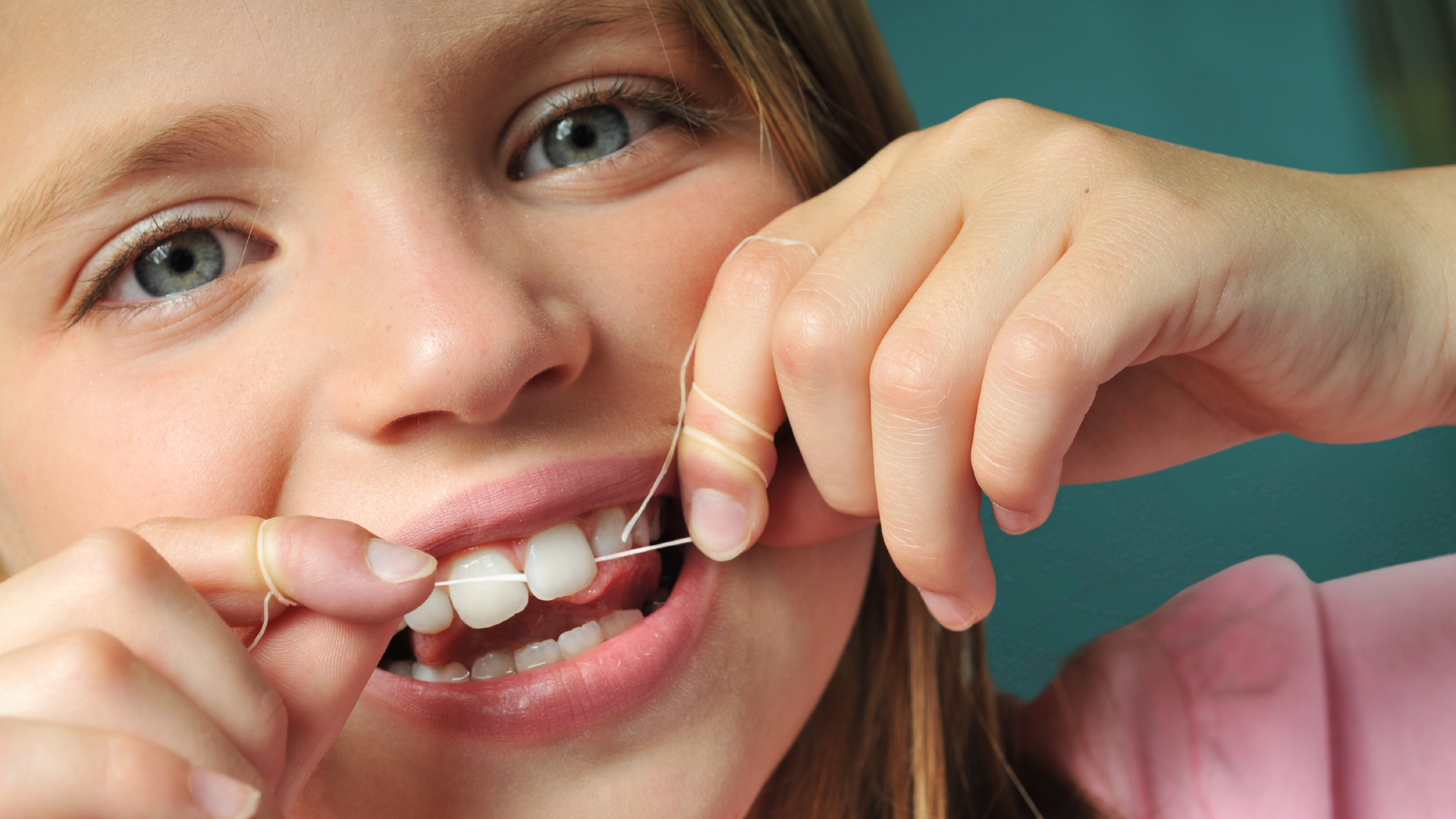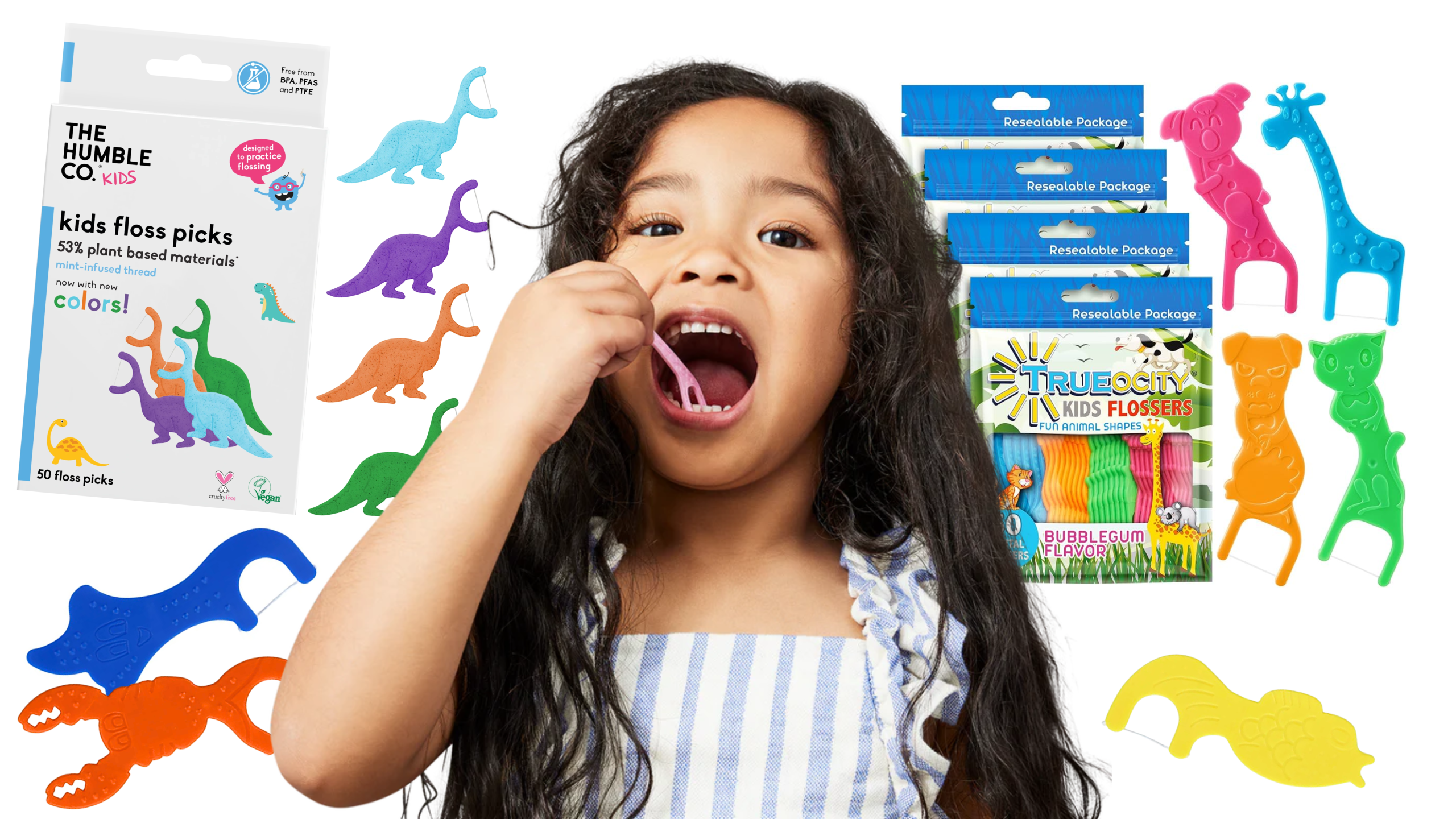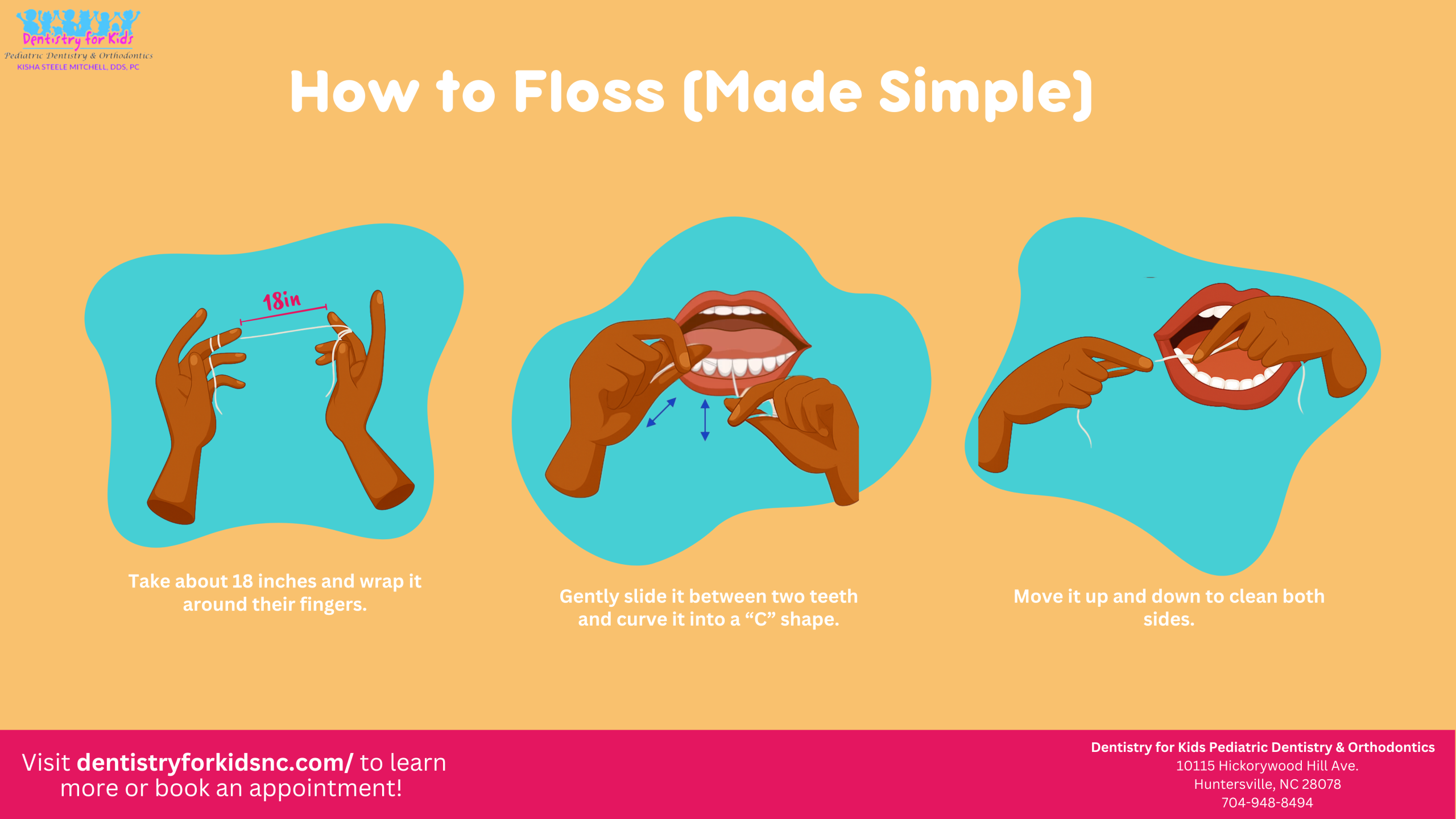
Let’s be real—getting your child to floss isn’t always easy. Maybe they say it’s “too hard,” or “boring,” or they just flat-out forget. But flossing is super important! It cleans the tiny spaces between teeth that toothbrushes can’t reach—and it helps fight off cavities, bad breath, and gum problems. According to Stanford Children’s, flossing removes plaque and debris that brushing alone simply can’t reach—especially between teeth and just under the gumline
The good news? Flossing can be fun (yes, really!). With the right tools, a little creativity, and some teamwork, flossing can become something your child actually wants to do. Here’s how to make it happen—without the fuss!
When Should Kids Start Flossing?
Once your child has two teeth that touch (usually around age 2 or 3), it’s time to start flossing. At first, you’ll need to help them. Think of it like teaching them to tie their shoes—it takes practice!
Most kids can start learning to floss on their own around age 6 or 7, but they’ll still need a grown-up to guide them and check their work until about age 10.
3 Easy Ways to Make Flossing Fun

Flossing doesn’t have to be a fight! Here are three fun ways to help your child actually enjoy flossing—and make it a regular part of their routine:
1. Let Them Pick Their Favorite Flossers
Flavored and colorful floss picks make flossing feel like a treat. Look for ones shaped like animals, dinosaurs, or stars, and in tasty flavors like bubblegum or watermelon. Let your child choose their own at the store—it helps them feel in control and excited to use them.
2. Turn It Into Family Time
Kids copy what they see. So why not floss together? Floss side by side in the mirror, play a fun two-minute song, or turn it into a silly floss dance challenge. You can even try a family floss-off—who can floss every night for a full week? The winner gets to pick a movie or dessert!
3. Use a Sticker Chart
Kids love seeing their progress. Hang up a simple flossing chart and let your child add a sticker every time they floss. After a week or a full month, reward them with something fun—a new toothbrush, a trip to the park, or an extra bedtime story.
How to Floss (Made Simple)

Here’s the easy way to teach your child to floss:
- If using regular floss, take about 18 inches and wrap it around their fingers.
- Gently slide floss between two teeth and use your thumb and index finger to curve floss into a “C” shape around teeth.
- Move it up and down to clean both sides.
- Use a clean section of floss for each space to avoid spreading plaque.
Or just use kid floss picks—they’re easier for small hands and just as effective!
Why It Matters
Flossing gets rid of food and plaque that brushing can miss. It helps stop cavities from forming between teeth and keeps gums healthy. Flossing removes almost 40% more plaque than brushing alone. That’s a big deal!
When kids learn to floss early, they build strong habits that keep their smile healthy for life.
Flossing doesn’t have to be a battle. With a little encouragement, your child’s bedtime routine can be full of happy, healthy teeth. Book a checkup with our team today to ensure your little one’s teeth are summer-ready!
